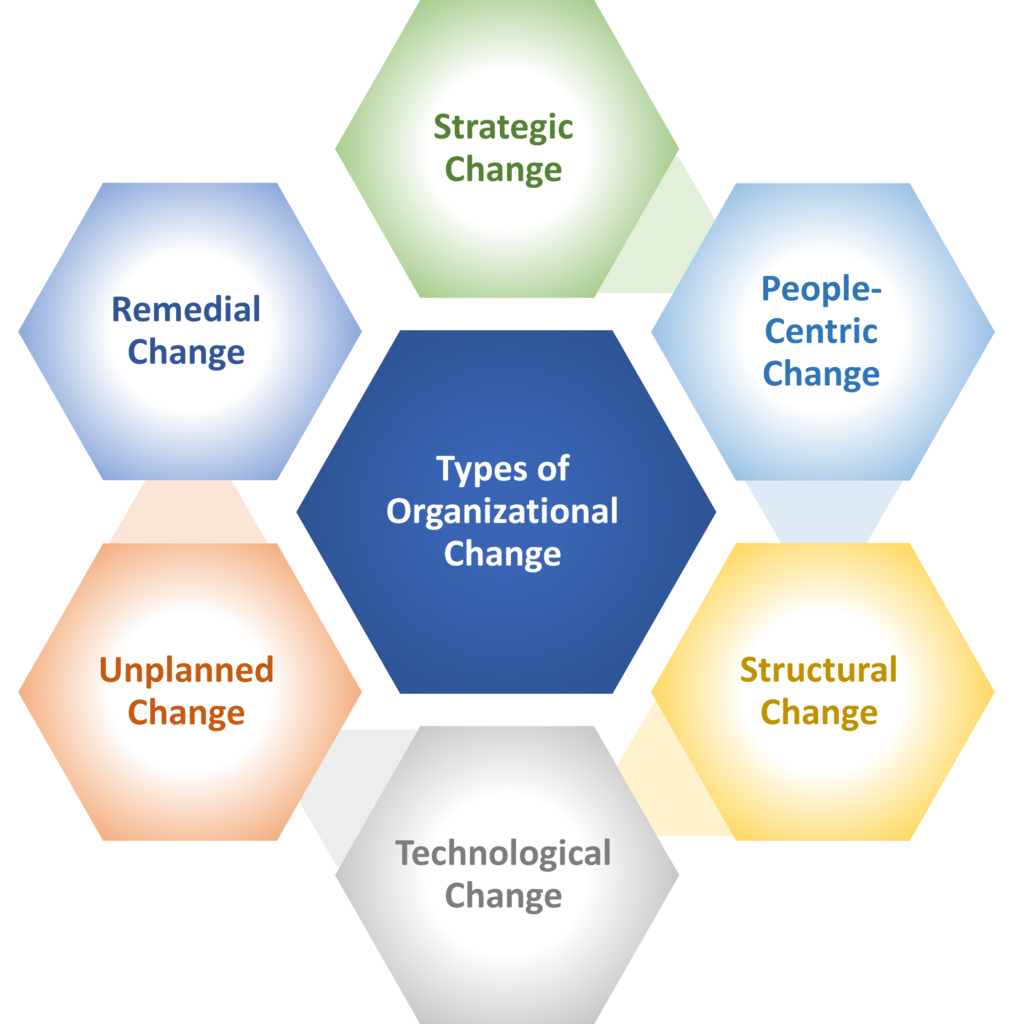
Understanding the Types of Organizational Change Helps in Implementing a Successful and Effective Strategy
Organizational change is a directed, intentional, purposeful, and conscious change that seeks to achieve internal and external environmental adaptation, ensuring the transition to a corporate state more capable of solving problems. It is also necessary to understand the need and types of organizational change for their importance before implementing a successful and effective change management strategy. Recognizing the need for change and learning how to make that change work are two very different skills.
Types of organizational change

It is essential to determine the type of organizational change before developing and designing a change management strategy. It helps implement the right change management plan to get the best achievements. Knowing the type of organizational change will help you choose the appropriate change management tools.
The following are the most known types of organizational change:
1. Strategic change
Strategic change involves changing an organization’s policies, structure, or operations. It helps the organization achieve its objectives, enhance its competitive advantage, or respond to market opportunities or threats. For example, the application of intelligent technology and innovative transformations lead to the necessity of making changes to the structure and operations of the organization. Thus, developing and improving skills and resources to generate new ideas or improve the organization’s existing services to meet new and changing customer requirements.
2. People-centric change
When implementing people-centered change, leadership must remember that employees will automatically and naturally resist change. For example, changes in employee responsibilities and roles may need additional training or upskilling and restructuring of teams. Therefore, a successful business leader must communicate with the team and employees and have a meaningful strategy for implementing change. People-centered change requires a leader to possess many qualities and skills, such as being emotionally intelligent and highly transparent.
3. Structural change
Structural changes include significant shifts in the management hierarchy, team organization, responsibilities attributed to different departments, job structure, chain of command, and administrative procedures. Note that these changes result from internal or external factors and usually affect how the organization changes. It often overlaps with people-centered changes because it directly affects all employees of the organization. For example, creating new teams or departments leads to the necessary transfer of people, duties, and changing roles, creating stress for these employees. To simplify the process, as a strategic leader, you must explain the benefits, justify change with clear reasoning, and highlight the positives. Noting that it is not about taking responsibility but instead focusing on each employee’s strengths.
4. Technological change
Technological change often involves introducing a new program or system to improve operations in an organization. Increasing competition in the market and ever-evolving technology make this change necessary. For example, when introducing new technology, such as artificial intelligence applications, you must have a solid transition plan as a future leader. Because you must let your employees know why this new technology is essential and what makes it better than previous solutions. Also, please explain how you will support them during the transition, noting the main benefits that can achieve from this change.
5. Unplanned change
An unplanned change is a necessary action after unexpected events. So, it is unpredictable, but it can deal with by managing it effectively. For example, the unexpected employees’ shift to remote work due to the COVID-19 pandemic. As an outstanding business leader, you must formulate a well-defined change management strategy that defines the goal and direction you want the change to take.
6. Remedial change
This type of change occurs when identifying a problem and must take immediate to solve it. The benefit of the remedial change is that we can judge its success quickly and straightforwardly, with only one question: “Was the problem resolved or not?” For example, addressing customer communication issues, as there is a big difference between simply handling customer communication and having an effective communication strategy. So, if your actions aren’t working, you must adapt quickly.
Different types of organizational change need different strategies. Since many changes will fall somewhere between adaptation and transformation, everything must be adapted or transformed according to the type of change. For this reason, future managers must understand that the change process must be tailored to each situation’s unique challenges and requirements.



